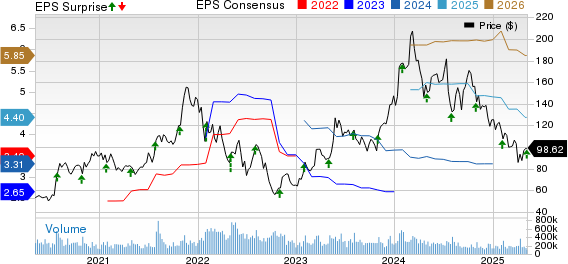Cocoa Prices Rise Amid Mixed Market Signals and Weather Improvement
On Tuesday, July ICE NY cocoa (CCN25) closed up +407 (+4.78%) while July ICE London cocoa #7 (CAN25) saw an increase of +124 (+1.96%).
Market Dynamics and Pricing Forces
The rise in cocoa prices can be attributed to a decline in the dollar index (DXY00), which prompted short covering in cocoa futures. However, improved weather conditions in West Africa have helped cocoa crops in both the Ivory Coast and Ghana, the world’s top cocoa producers. Cocoa farmers in the Ivory Coast reported, “Cocoa trees continue to re-flower, and the cherelles are becoming pods,” while farmers in Ghana noted that recent rains have enhanced crop conditions.
Sales Declines Affect Demand
Last Wednesday, cocoa prices hit a two-week low due to demand concerns. Hershey Co. reported a 14% decrease in Q1 sales and is expecting to face $15-$20 million in tariff costs in Q2. This could lead to higher chocolate prices and reduced consumer demand. Similarly, Mondelez International reported weaker-than-expected Q1 sales, indicating that consumers are cutting back on snack purchases amid economic uncertainty and elevated chocolate prices.
Inventory and Production Trends
A resurgence in current cocoa inventories is also contributing to bearish prices. After falling to a 21-year low of 1,263,493 bags on January 24, ICE-monitored cocoa inventories held in U.S. ports rebounded to a seven-month high of 2,084,247 bags on Monday. Furthermore, negative carryover effects are evident from Bloomberg’s report last Monday, which highlighted that Nigerian Mar cocoa exports rose 24% year-on-year to 27,564 MT, with Nigeria being the world’s fifth-largest cocoa producer.
Quality Issues and Market Expectations
Quality concerns regarding the Ivory Coast’s mid-crop may limit price declines in the near term. Cocoa processors have reported rejecting truckloads of mid-crop cocoa beans due to quality issues, claiming that around 5% to 6% of beans in each shipment are of poor quality, compared to just 1% during the main crop. On April 25, NY cocoa reached a 2.5-month high due to supply concerns, as the pace of cocoa exports from the Ivory Coast slowed. Government data indicates that farmers shipped 1.53 MMT of cocoa from October 1 to May 3, marking an 11.7% increase from last year, but down from an earlier 35% surge in December.
Global Demand and Future Projections
Recent news of stronger-than-expected global cocoa demand provides a positive carryover effect. Q1 North American cocoa grindings fell 2.5% year-on-year to 110,278 MT, which was less than the expected decline of at least 5%. Similarly, European cocoa grindings dipped 3.7% year-on-year to 353,522 MT, outperforming expectations for a 5% drop. In Asia, cocoa grindings decreased by 3.4% year-on-year to 213,898 MT, again better than forecasts.
External Factors Impacting Prices
Concerns surrounding the Ivory Coast’s upcoming mid-crop are again influencing cocoa prices. Rabobank has noted that late rains in the area have hindered crop growth. The mid-crop, which usually begins in April, is projected to yield 400,000 MT this year, a 9% decrease from last year’s harvest of 440,000 MT.
Surplus Forecasts and Supply Challenges
Adding to the bearish outlook, the International Cocoa Organization (ICCO) projected a global cocoa surplus of 142,000 MT for the 2024/25 period, the first surplus in four years. Additionally, the ICCO forecasts an increase in global cocoa production by 7.8% year-on-year to 4.84 MMT. In contrast, smaller cocoa supplies from Ghana offer some support, particularly after Cocobod, Ghana’s cocoa regulator, revised its 2024/25 harvest forecast down to 617,500 MT, a 5% decrease from the previous estimate of 650,000 MT.
Long-Term Considerations
The ICCO’s analysis from February also indicated a cocoa deficit of 441,000 MT for the 2023/24 season, the largest deficit in over 60 years. They reported a 13.1% year-on-year drop in cocoa production to 4.38 MMT and noted that the 2023/24 global cocoa stocks-to-grindings ratio stands at a 46-year low of 27.0%.
On the date of publication, Rich Asplund did not have (either directly or indirectly) positions in any of the securities mentioned in this article. All information and data in this article is solely for informational purposes. For more information please view the Barchart Disclosure Policy here.
The views and opinions expressed herein are the views and opinions of the author and do not necessarily reflect those of Nasdaq, Inc.
